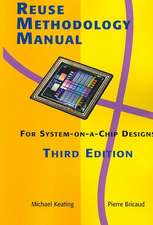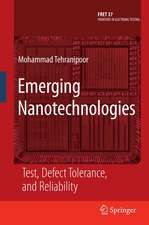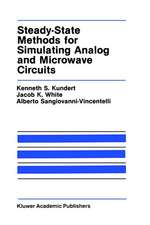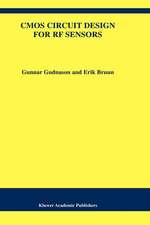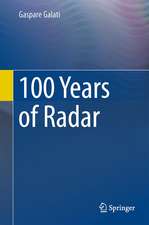Fault-Tolerant Design
Autor Elena Dubrovaen Limba Engleză Paperback – 8 apr 2015
| Toate formatele și edițiile | Preț | Express |
|---|---|---|
| Paperback (1) | 449.15 lei 43-57 zile | |
| Springer – 8 apr 2015 | 449.15 lei 43-57 zile | |
| Hardback (1) | 585.57 lei 43-57 zile | |
| Springer – 14 mar 2013 | 585.57 lei 43-57 zile |
Preț: 449.15 lei
Nou
Puncte Express: 674
Preț estimativ în valută:
85.97€ • 93.42$ • 72.26£
85.97€ • 93.42$ • 72.26£
Carte tipărită la comandă
Livrare economică 21 aprilie-05 mai
Preluare comenzi: 021 569.72.76
Specificații
ISBN-13: 9781493902408
ISBN-10: 1493902407
Pagini: 204
Ilustrații: XV, 185 p.
Dimensiuni: 155 x 235 x 11 mm
Greutate: 0.29 kg
Ediția:2013
Editura: Springer
Colecția Springer
Locul publicării:New York, NY, United States
ISBN-10: 1493902407
Pagini: 204
Ilustrații: XV, 185 p.
Dimensiuni: 155 x 235 x 11 mm
Greutate: 0.29 kg
Ediția:2013
Editura: Springer
Colecția Springer
Locul publicării:New York, NY, United States
Public țintă
Upper undergraduateCuprins
Introduction.- Fundamentals of Dependability.- Dependability Evaluation Techniques.- Hardware Redundancy.- Information Redundancy.- Time Redundancy.- Software Redundancy.- Conclusion.
Notă biografică
Elena Dubrova is a professor in the School of Information and Communication Technology at the Royal Institute of Technology in Kista, Sweden.
Textul de pe ultima copertă
This textbook serves as an introduction to fault-tolerance, intended for upper-division undergraduate students, graduate-level students and practicing engineers in need of an overview of the field. Readers will develop skills in modeling and evaluating fault-tolerant architectures in terms of reliability, availability and safety. They will gain a thorough understanding of fault tolerant computers, including both the theory of how to design and evaluate them and the practical knowledge of achieving fault-tolerance in electronic, communication and software systems. Coverage includes fault-tolerance techniques through hardware, software, information and time redundancy. The content is designed to be highly accessible, including numerous examples and exercises. Solutions and powerpoint slides are available for instructors.
· Provides textbook coverage of the fundamental concepts of fault-tolerance;
· Describes a variety of basic techniques for achieving fault-tolerance in electronic, communication and software systems;
· Guides readers to develop skills in modeling and evaluating fault-tolerant architectures in terms of reliability, availability and safety;
· Describes in detail sources of faults and means for their prevention and forecasting.
· Provides textbook coverage of the fundamental concepts of fault-tolerance;
· Describes a variety of basic techniques for achieving fault-tolerance in electronic, communication and software systems;
· Guides readers to develop skills in modeling and evaluating fault-tolerant architectures in terms of reliability, availability and safety;
· Describes in detail sources of faults and means for their prevention and forecasting.
Caracteristici
Provides textbook coverage of the fundamental concepts of fault-tolerance Describes a variety of basic techniques for achieving fault-tolerance in electronic, communication and software systems Guides readers to develop skills in modeling and evaluating fault-tolerant architectures in terms of reliability, availability and safety Describes in detail sources of faults and means for their prevention and forecasting Includes supplementary material: sn.pub/extras


